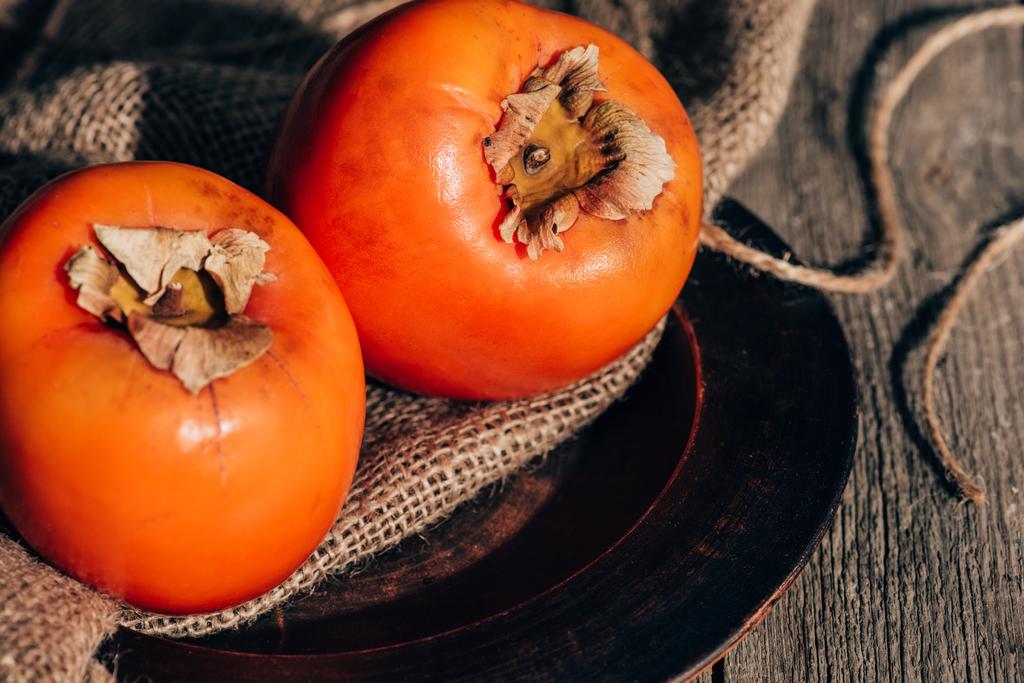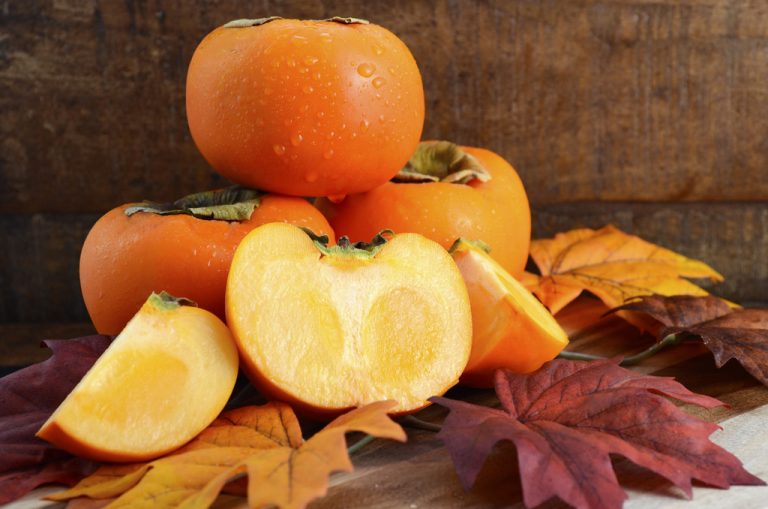Persimmons are sweet fruits that are mostly available in winter. But how healthy are persimmons? We’ll show you which nutrients are in it and how to eat persimmons properly.
Bright orange skin, sweet flesh and the shape of a large tomato: this is the persimmon, also known as persimmon. It is the fruit of the persimmon tree and is one of the oldest cultivated plants.

Nutritional values and Co.: This is how healthy the persimmon is
Persimmons are not only delicious, but also healthy. While they have a little more calories than some other winter fruits like oranges, they also provide you with a lot of nutrients.
Nutritional values per 100 grams of fruit:
Kilocalories: 70 kcal
Protein: 0.58g
Fat: 0.19 g
Carbohydrates: 18.59 g
of which sugar: 12.53 g
Fiber: 3.6 g
Persimmons contain a relatively large amount of sugar, especially fructose, but also glucose. This makes persimmons an ideal post-workout snack, because the fruit quickly recharges the glucose stores after exercise and thus gives you new energy.
Thanks to the high fiber content, the snack also fills you up well and contributes to healthy digestion.
Minerals per 100 grams of fruit (selection):
Calcium: 8 mg
Magnesium: 9 mg
Potassium: 161 mg
Sodium: 1 mg
Phosphorus: 17 mg
Vitamins per 100 grams of fruit (selection):
Vitamin C: 7.5 mg
Folic acid: 8 µg
Beta carotene (provitamin A): 253 µg
The “fruit of the gods” has a large number of minerals and vitamins. The high content of provitamin A is particularly striking. Provitamin A is the precursor of vitamin A found in animal and vegetable foods. Vitamin A is an essential vitamin which, among other things, supports the visual process and is involved in many growth processes. The potassium present in the persimmon takes over functions in the energy metabolism and regulates the circulation.
Persimmons also contain a relatively large amount of tannins. These are vegetable tanning agents that ensure that the unripe persimmons taste tart and often leave a furry mouthfeel. When the fruit is ripe, the tannin content is lower. Incidentally, the kaki varieties Sharon fruit and Persimon contain fewer tannins and therefore do not cause a furry feeling.
This is how you eat the persimmons correctly
Persimmons have a fairly thick and firm skin that is not always edible. As a result, many peel the fruit and cut into wedges like apples, or cut the top open and scoop out the flesh like a kiwi. The cultivated varieties such as Sharon fruit have a thinner skin that can also be eaten.
Persimmons taste sweet. They are therefore perfect for naturally sweetening your morning muesli or porridge. You can also make a delicious cake with the fruit, or use it to make jam, jelly, syrup or compote.
If the sweetness of the fruit is too intense, you can soften it with a squeeze of lemon or lime juice, or use Sharon fruit instead. This one is less cute.
Persimmons also taste good as a sweet, fresh element in salads or curries.
Tips:
If the persimmon is not yet ripe, you can store it next to bananas or apples for a few days. These secrete a “ripening gas” which stimulates fruit to ripen faster.
You can determine the ripeness of the fruit by applying light pressure to the persimmon with your fingers: if the skin gives way, the fruit is ripe.
The persimmons quickly develop brown spots. However, these are not necessarily a sign of rot, but are due to the high sugar content.
How sustainable is the kaki ?
Persimmons originally come from Asia and today most of the growing areas are in Korea, China and Japan. But now kakis are also grown in California, New Zealand and Israel. The persimmons that we get in this country mostly come from Italy or Spain. So kakis are not really regional. They sometimes have to travel long distances before they make it onto the local supermarket shelves. This sometimes produces large amounts of climate-damaging CO2. When shopping, make sure that you buy kakis from European cultivation areas in order to improve the climate balance somewhat.
Persimmon trees are rarely attacked by pests. Thus, the use of chemical pesticides is not necessary, so that the cultivation of persimmons is not harmful to humans, the environment and animals. In order to avoid these completely, you can pay attention to organic persimmons.

